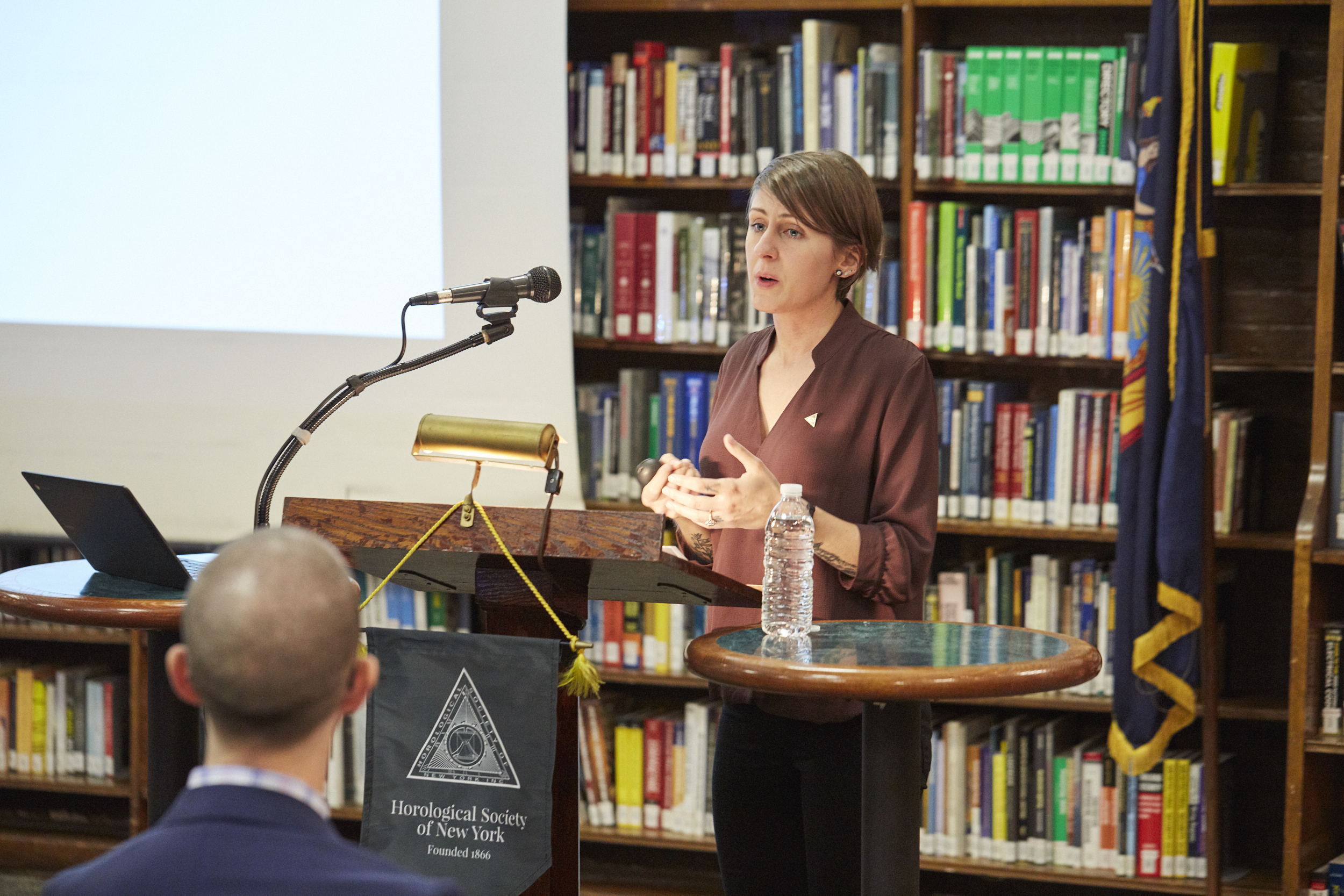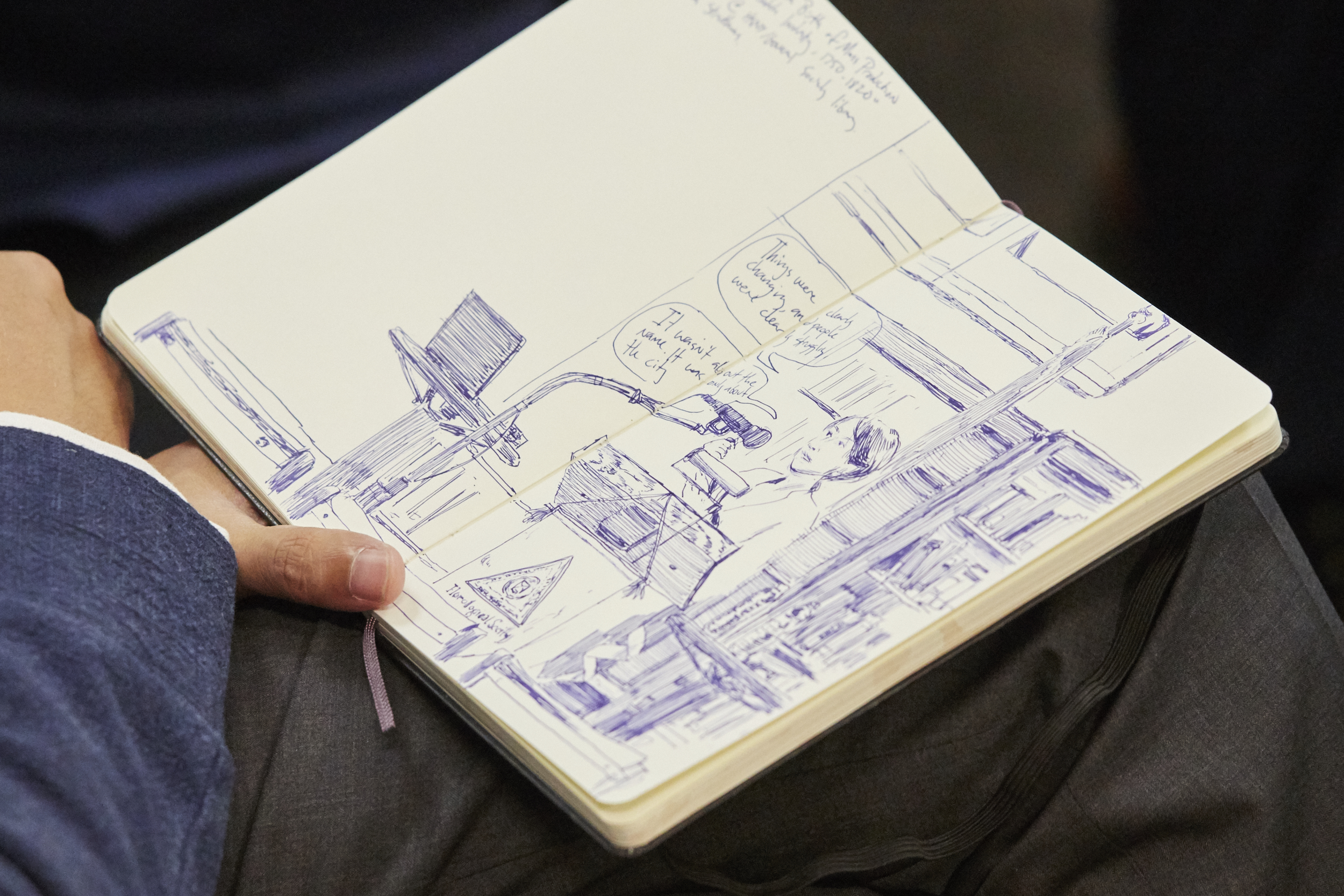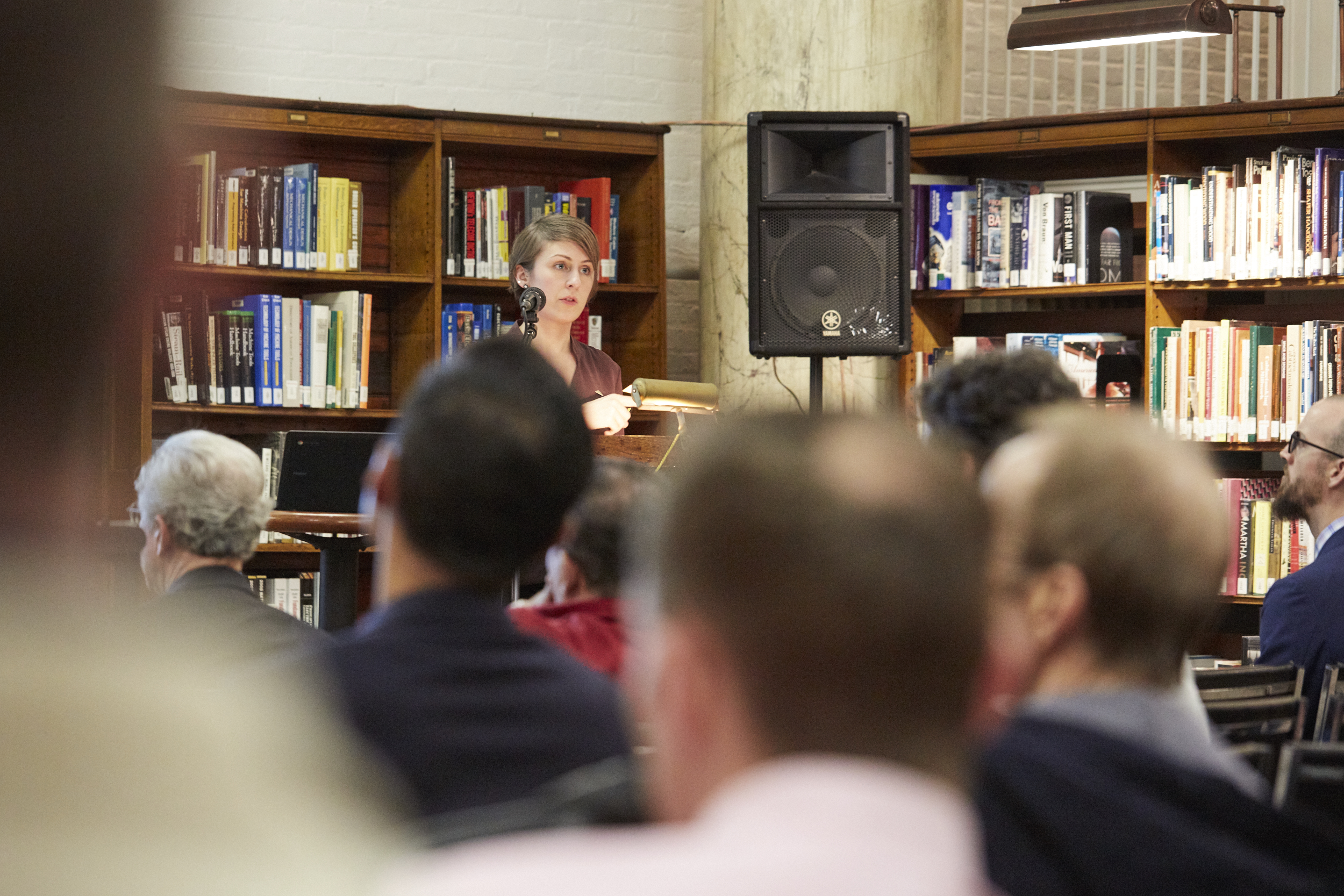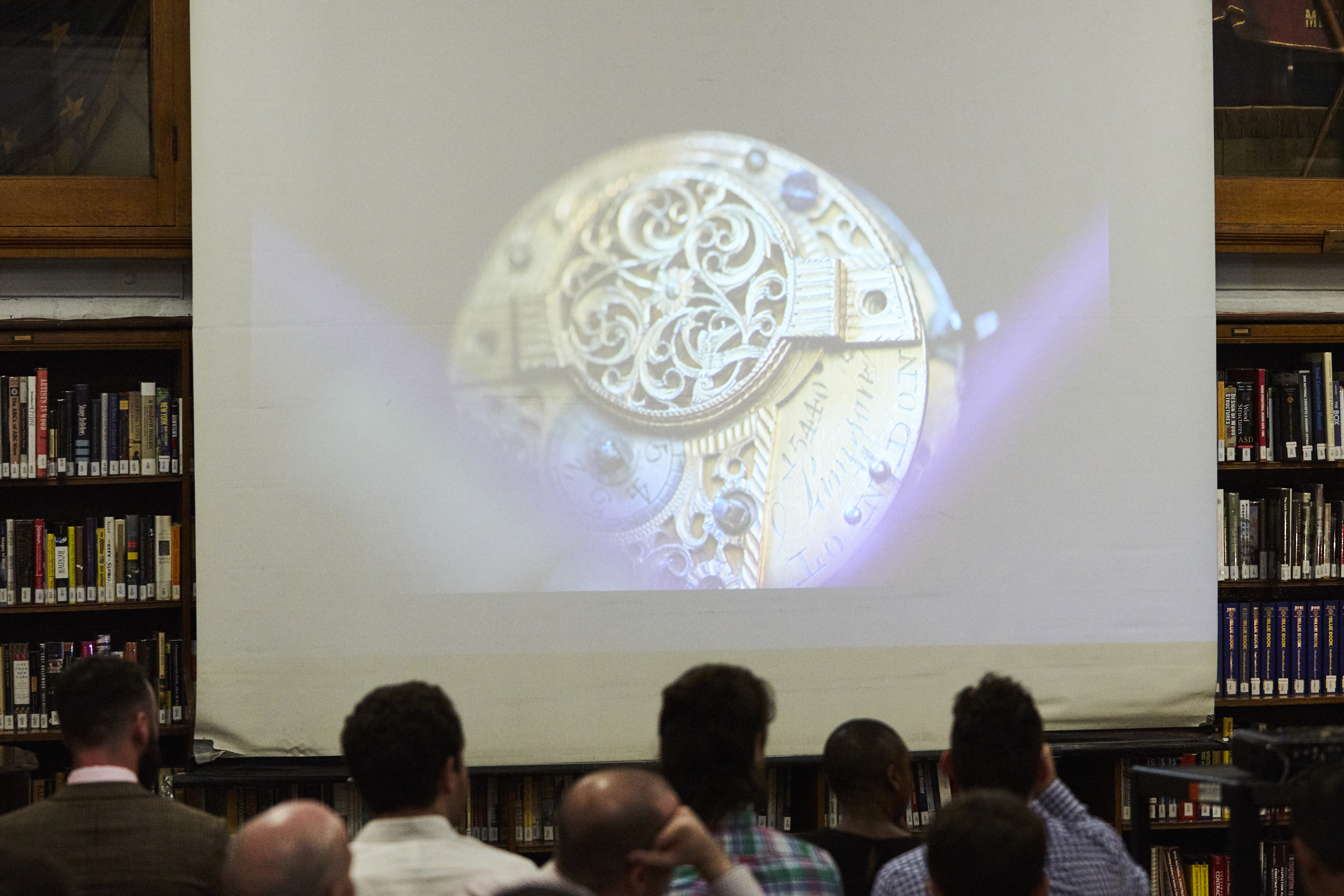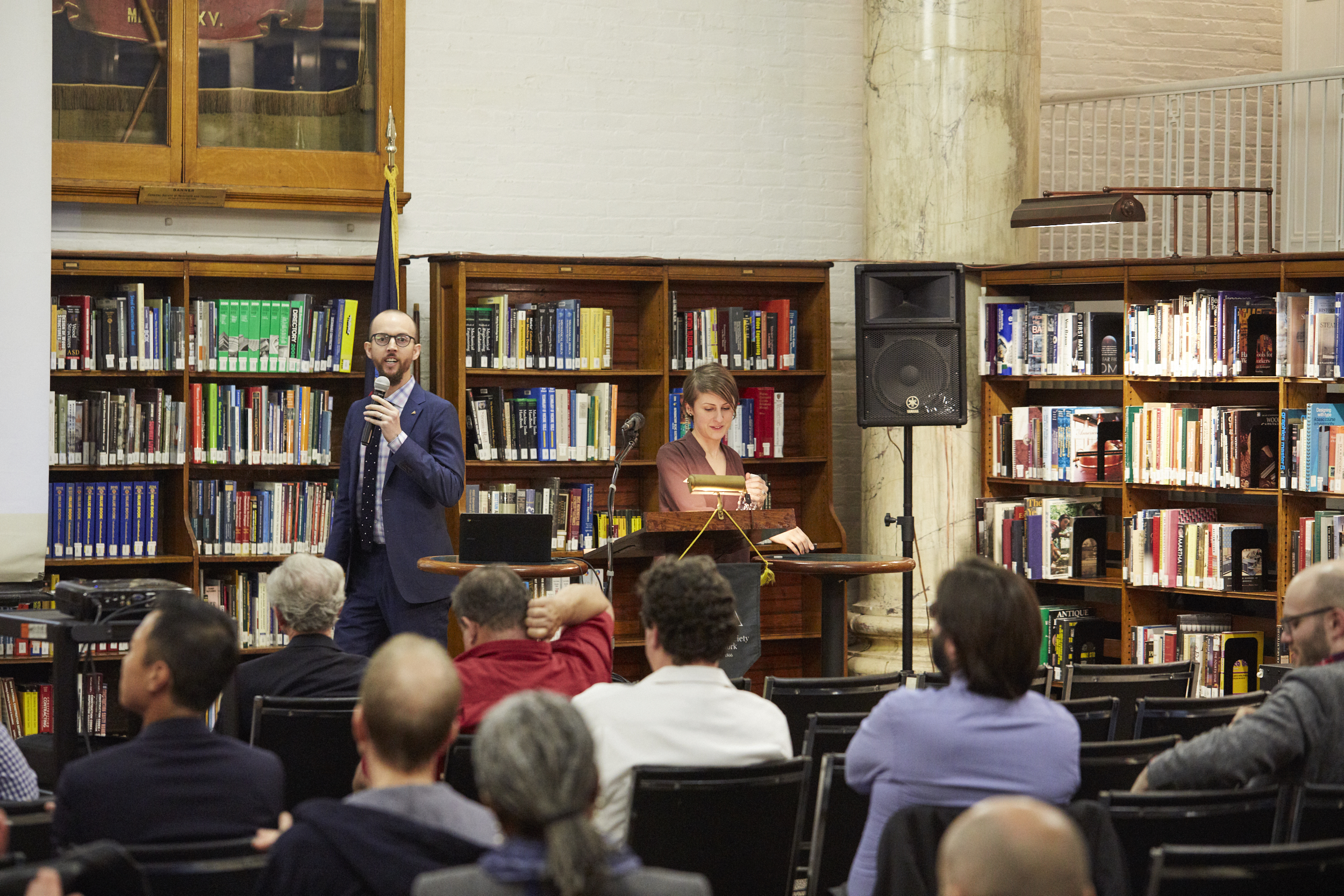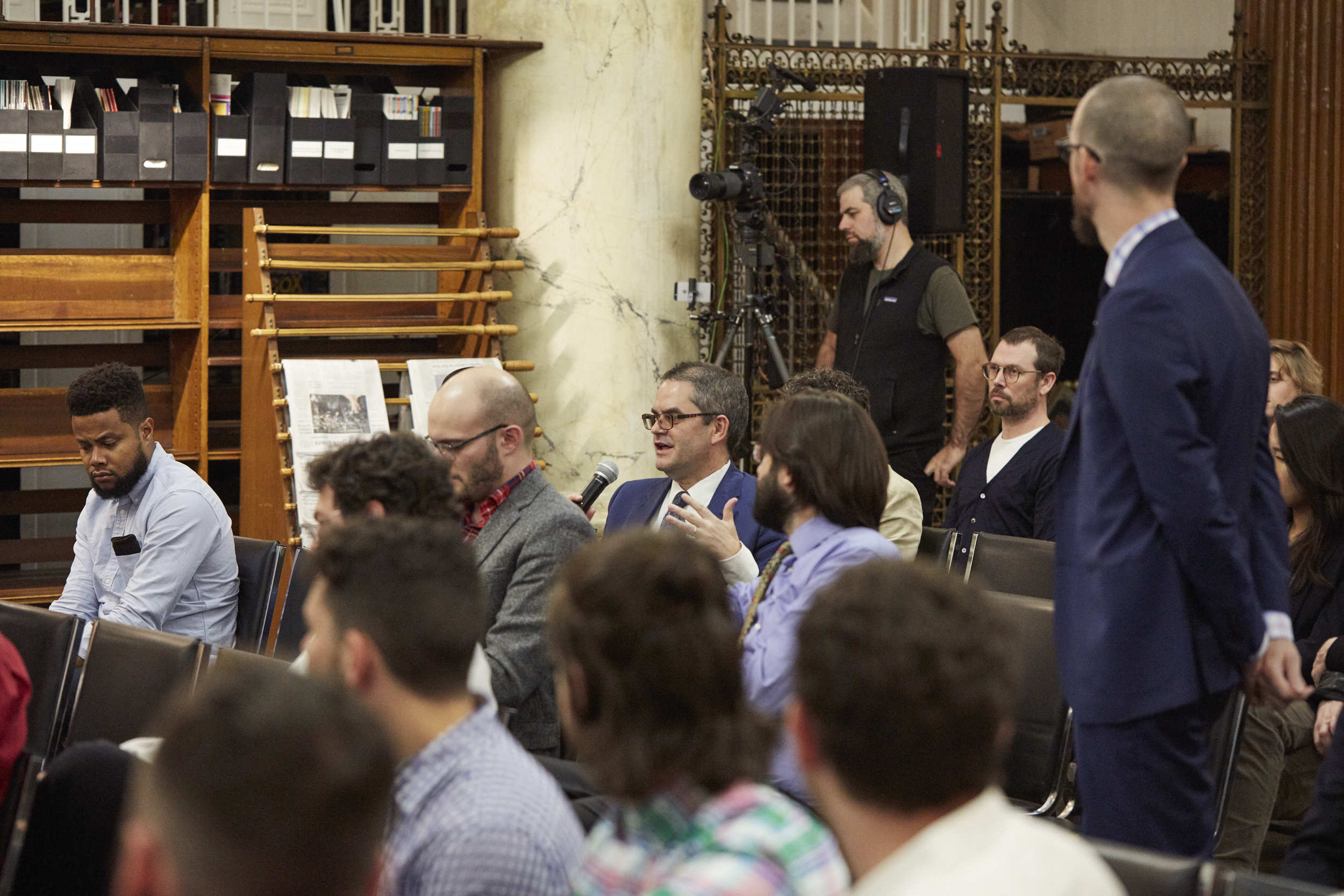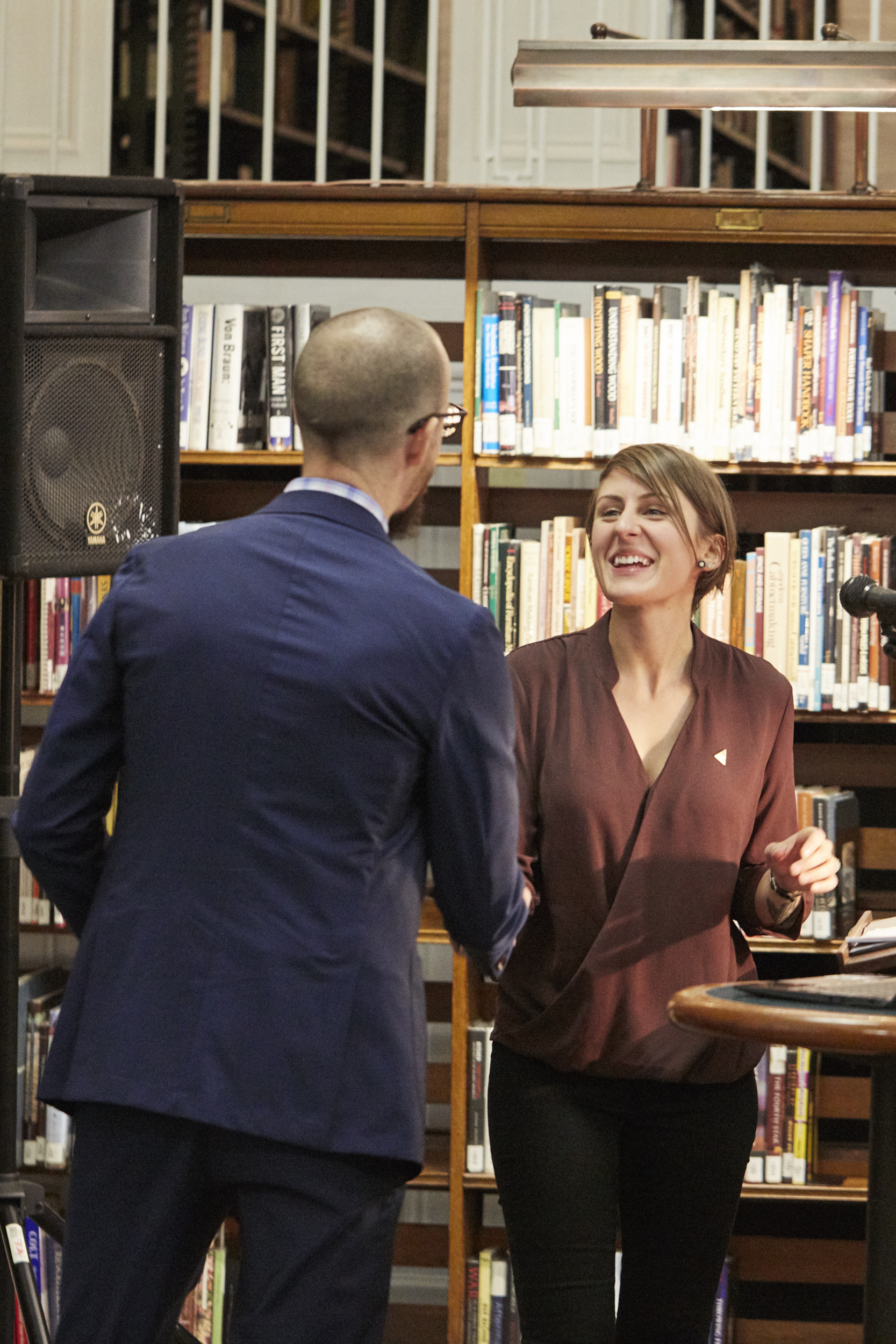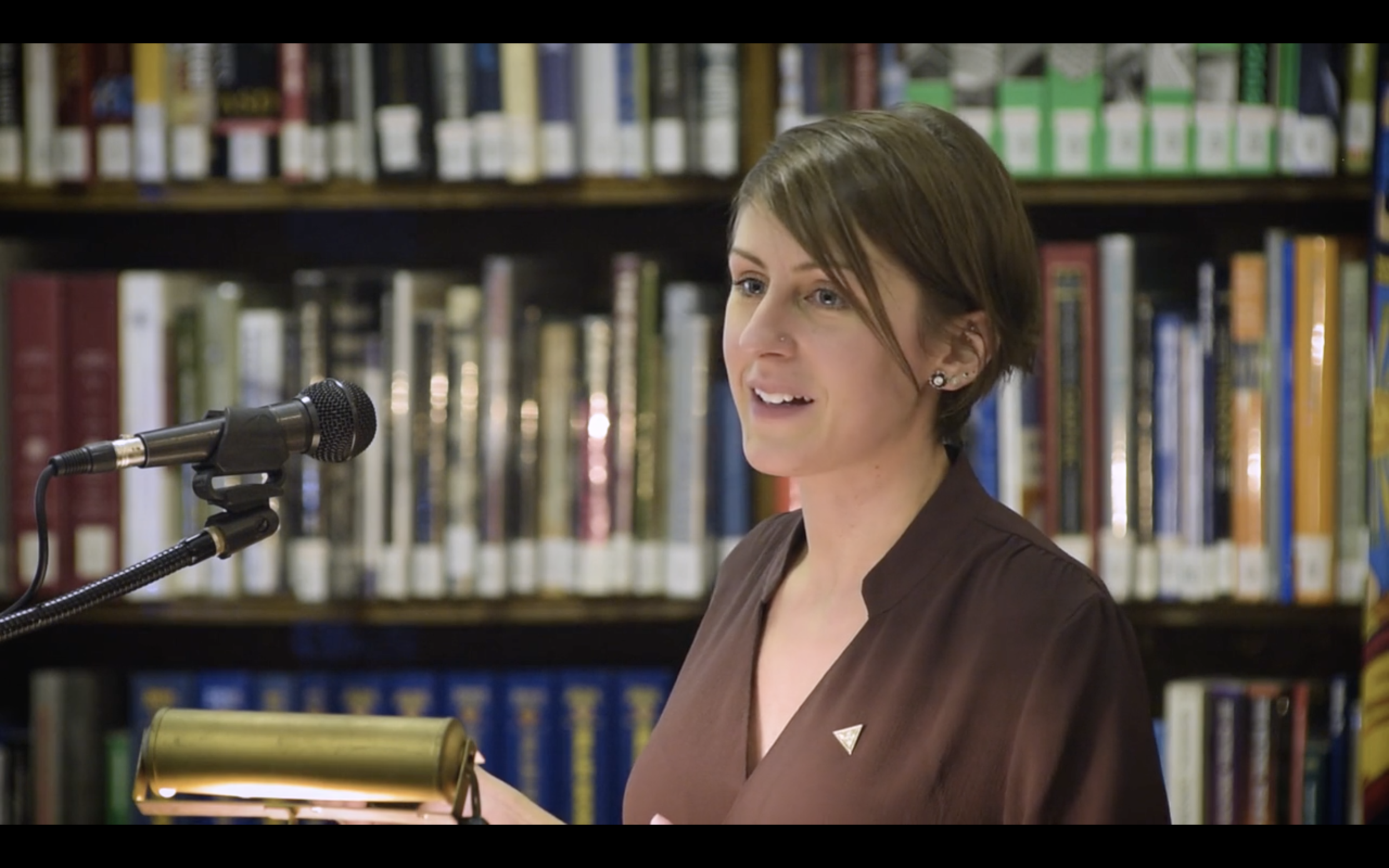Meeting Recap: Fakes, Forgeries and the Birth of Mass Production in the European Watch Industry, 1750-1820
Dr. Rebecca Struthers FBHI FRSA Ph.D., Birmingham, UK
October 2, 2017
Video recordings of meetings are available to HSNY members.
Anyone who has visited Chinatown in New York has seen the thousands of “imitation” watches on offer. Though it might seem like a product of the age of mass-machining in which we live, such a concept is much older. In her lecture at the Horological Society of New York on October 2, 2017, Dr. Rebecca Struthers, FBHI, FRSA, PhD, Birmingham, UK, discussed her groundbreaking research on 18th-century “Dutch forgeries.”
London was the center of horology in the 18th century. This was the Golden Age of British Watchmaking. Watchmakers like Tompion and Mudge produced roughly 1,000 watches a year. But the emergence of a vibrant and hungry middle class in Britain meant that these master watchmakers—faced with heavy taxation on precious metals after the Napoleonic Wars—could not meet the demands that the middle class posed on them. However, watchmakers in Europe were not faced with the same economic structures. European watchmakers capitalized on the depression in England to flood the market with cheap watches, often using fictitious names—like Harry Potter.
These were called “Dutch forgeries” but, as Struthers pointed out, they were not Dutch made, nor were they forgeries of specific well-known makers like Mudge or Tompion. These watches imitated the Dutch style, often with scalloped edges on the dial, but with an inferior quality of metal and materials. Struthers used her past experience as a metalsmith to study the cases and came to the conclusion that they had been stamped and then soldered with lead, not cast as previously thought.
Since standardized mass manufacturing didn’t emerge until the mid-19th century in America, the fact that these watches were produced and then distributed in such large numbers is astounding. Their existence spoke of a novel and innovative redistribution of labor, allowing for over 40,000 watches to be produced in a year. These watches proved that cheap watches would sell because there was a market to buy them. This changed the face of horology forever, as portable accurate timekeeping was no longer only the province of the rich.
HSNY thanks Dr. Rebecca Struthers for her fascinating lecture!
Submitted by Christa Chance, Recording Secretary, HSNY


